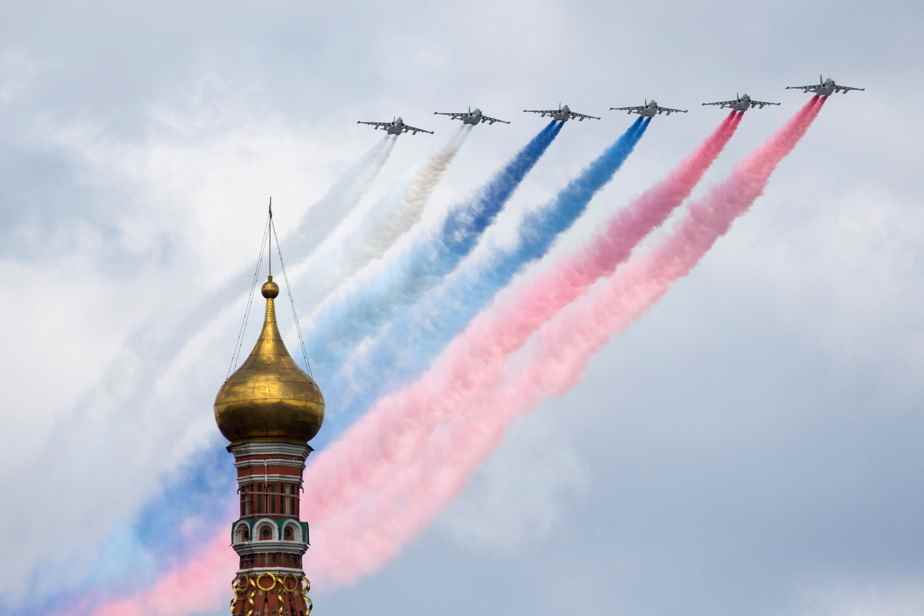As Canada plans to modernize its military aviation, it is useful to consider the role of aviation in light of the current conflict in Ukraine. How to explain the relative absence of the Russian air force in the war which is taking place in Ukraine? Does it mean that the aerial weapon – which is the most expensive – is over and that strategies need to be rethought? That the battlefield of the future will essentially be one of confrontation between missiles, drones and anti-missile rockets?
The Russian superpower has 1500 fighter planes (MIG 31, Sukhoi Su-34 and Su-35), 125 Tupolev strategic bombers, radar planes (Berlev A-50 AWCS) and 1300 helicopters (Ka 52, MI35, MI17). Ukraine has older models (Sukhoi Su-27 and Mig 29) in minimal quantities as well as SA11 anti-aircraft rockets.
In fact, in the first weeks of the war, the Russian air force flew nearly 140 sorties daily. It had air supremacy and targeted air and air defense bases as well as Ukrainian ammunition depots.
However, it would appear that Russian communications were jammed to the point that Russian aircraft could not receive instructions.
On the other hand, nearly 10,000 personal anti-aircraft weapons of the Stinger (American) and STARstreak (British) type were distributed and scattered on Ukrainian territory. Added to this are the armaments inherited from the Soviet era as well as local developments such as the Kropyva combat control tablet which transmits drone images in real time to the artillery. In addition, the Ukrainian army and population have access to internet communications thanks to Elon Musk’s Starlink satellite network.
Contrary to Western armies in which the air force command constitutes a separate body, the Russian air force is commanded by the army which is at the front. When we know that the army showed up on the ground with outdated geographical maps, we can understand that the Russian air attacks could not really be targeted and that their bombs were dropped as at the time of the Second World War. The sophisticated Russian armament could not be exploited to the extent of its possibilities.

PHOTO ALEXEY NIKOLSKY, AGENCE FRANCE-PRESSE ARCHIVES
Prototype of the new Sukhoi Su-75 Russian “checkmate”
Besides running out of components due to the sanctions imposed on Russia, the Russian air force was unable to take advantage of its precision weaponry. For example, the MIG 31 aircraft can pursue 24 targets within a radius of 120 km and attack 6 simultaneously. The Su-35 aircraft can attack air or ground targets. However, reliable communication and navigation between the command center and the airmen must be ensured.
The Russian air force then switched to night attacks in the city regions. Suicide missile and drone attacks on Ukraine’s power and water facilities followed. The delivery of American anti-aircraft missiles of the Patriot type constitutes a first response to this type of attack. Iranian drones used by the Russian military are very noisy and can be shot down by anti-aircraft guns or handheld rockets when visibility is good.
From theory to practice
Yet groups of military experts around the world agree that the Russian school of strategy is the most advanced in the world. However, from theory to practice, a large number of logistical difficulties must be overcome. Moreover, the average annual flight hours of a Russian combat pilot is 120 hours, compared to 250 hours in Western armies.
It is very likely that the Russian leadership will seek to correct the weaknesses of the army and attempt a massive attack coordinating barrages of artillery, infantry, special forces, cyber warfare and the air force in an attempt to restore its prestige and strength. of deterrence. However, it will take much more than a few months to get there. The fact that Poland has decided to carry out military exercises with 200,000 soldiers and as many reservists in March 2023 is perhaps a sign that this country is preparing for the worst.
The majority of US allies opt for the F-35 stealth aircraft with advanced sensors. Its range is over 600 nautical miles and, depending on its mission, it can carry over 18,000 pounds of ammunition.
It is useful to keep in mind that aviation is a powerful weapon that is far more flexible than ground-to-ground rockets. Ensuring coordinated and reliable communication in real time is an essential asset in being able to take advantage of a well-trained air force.

